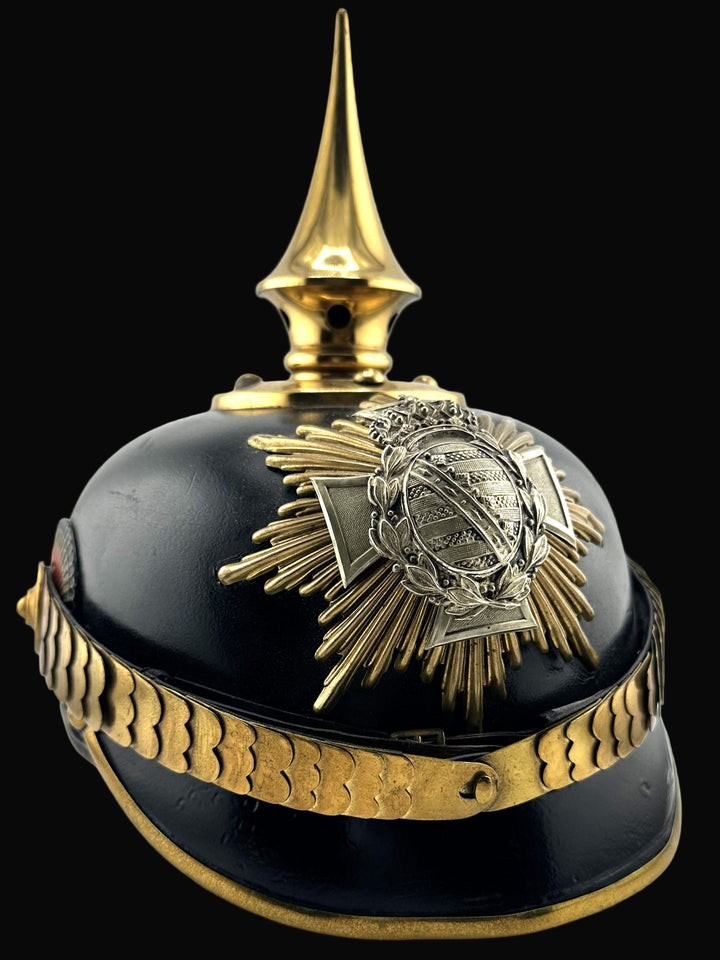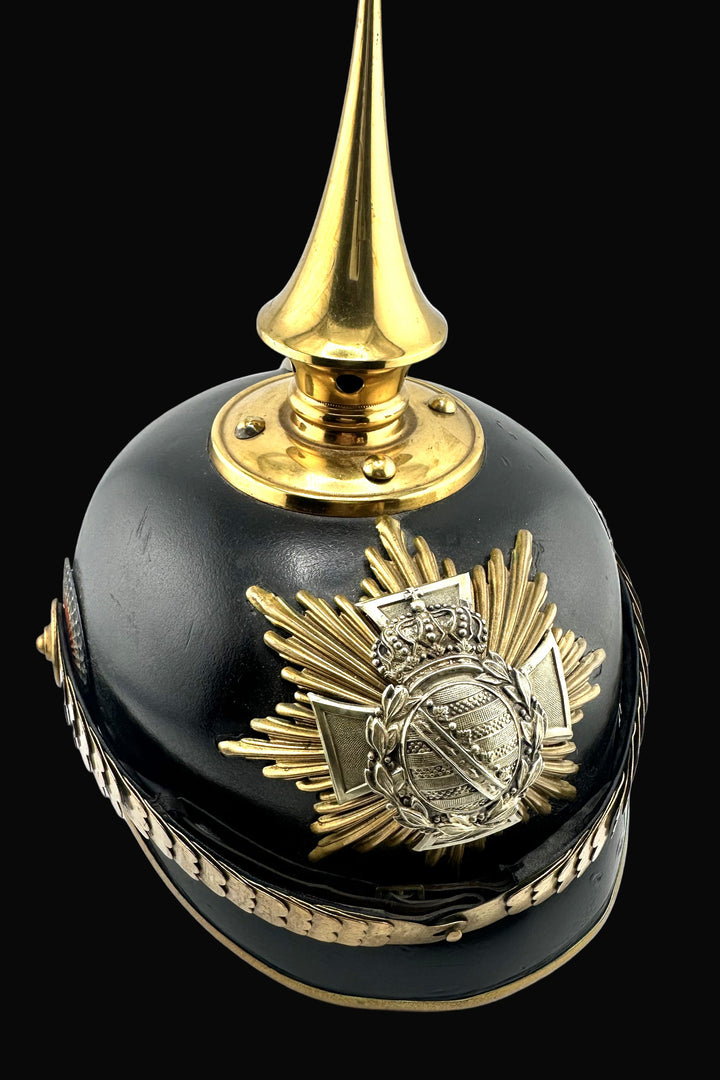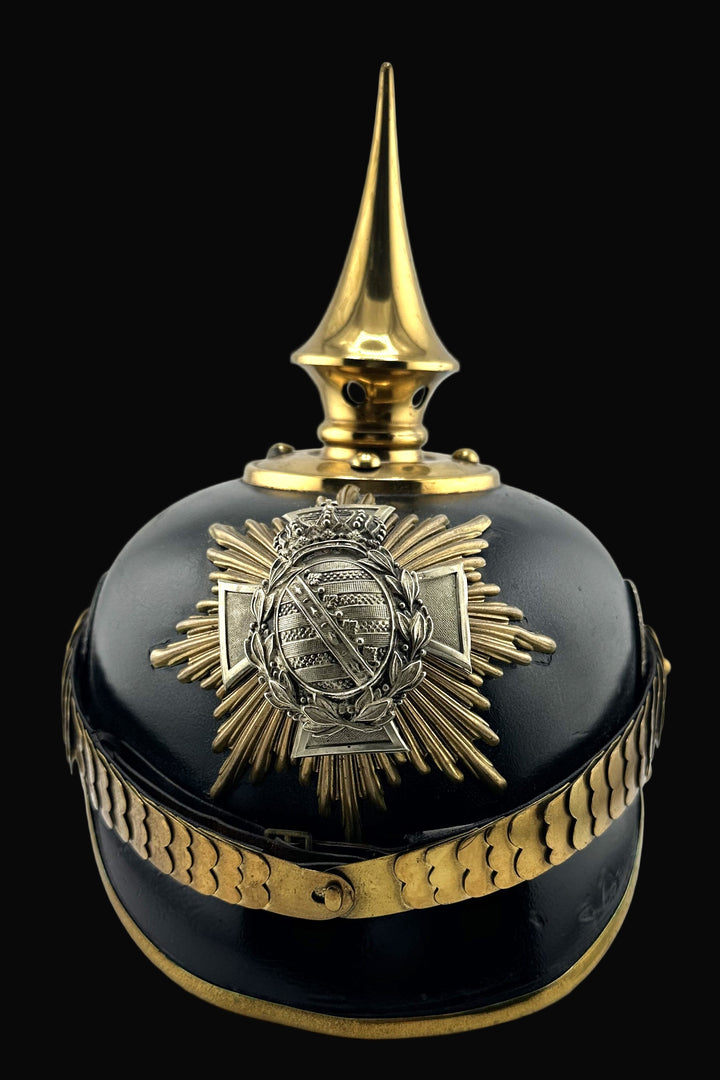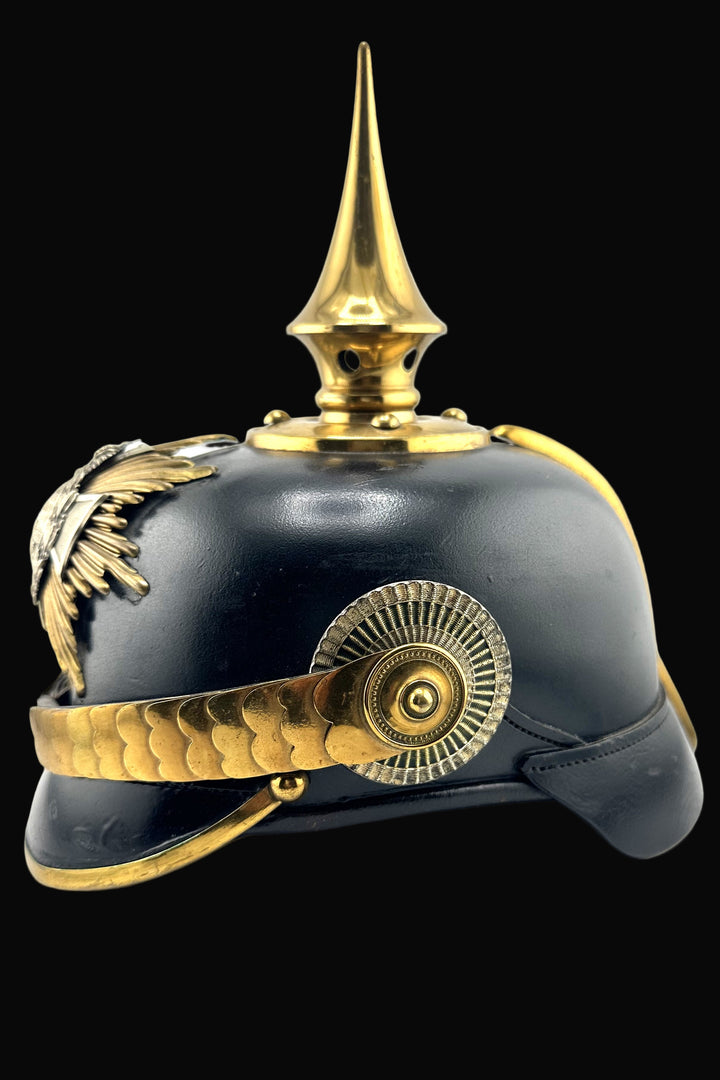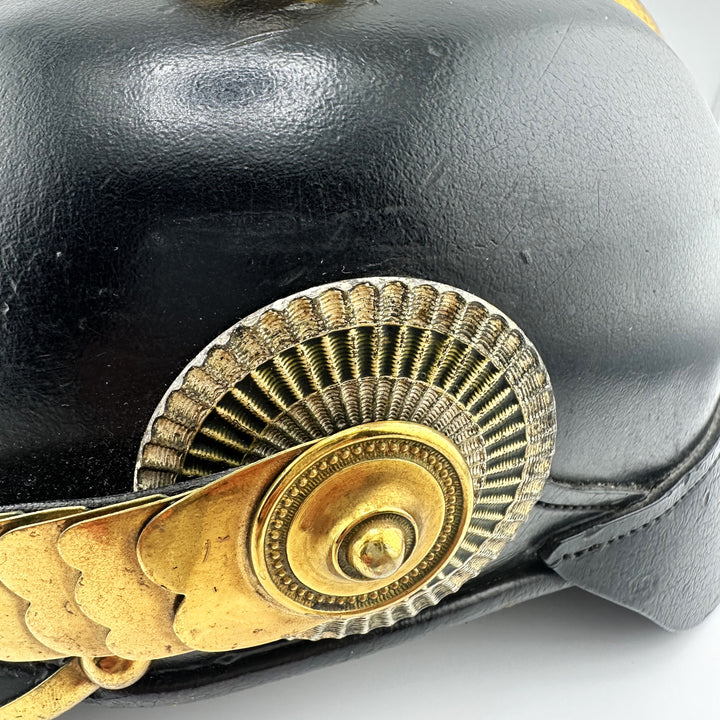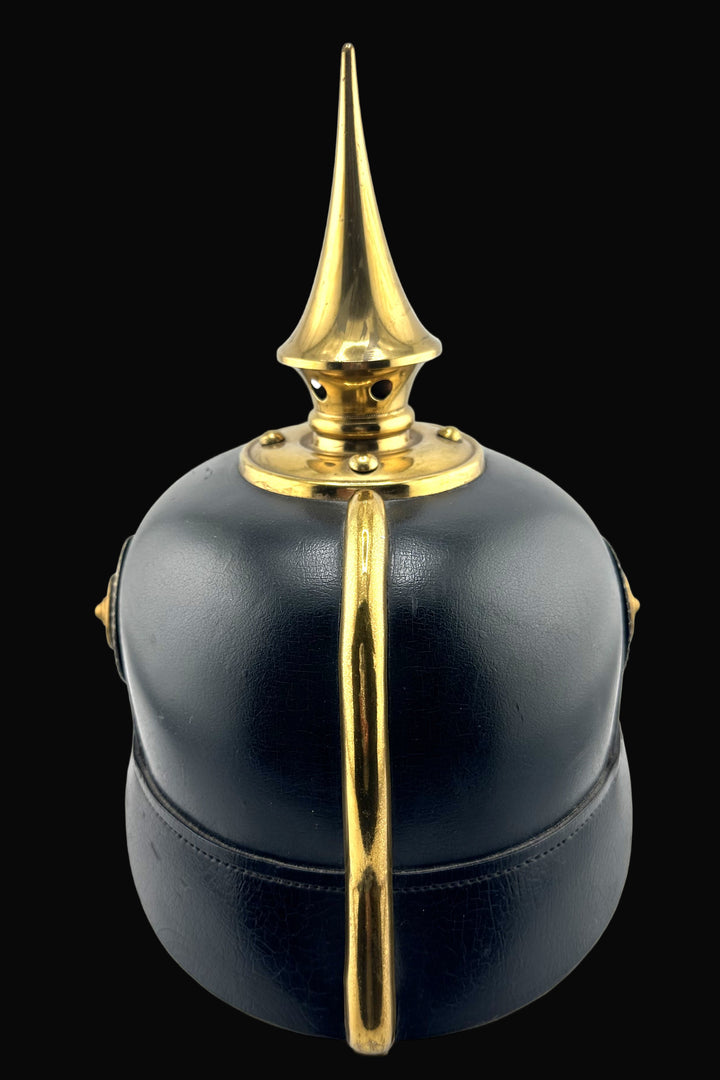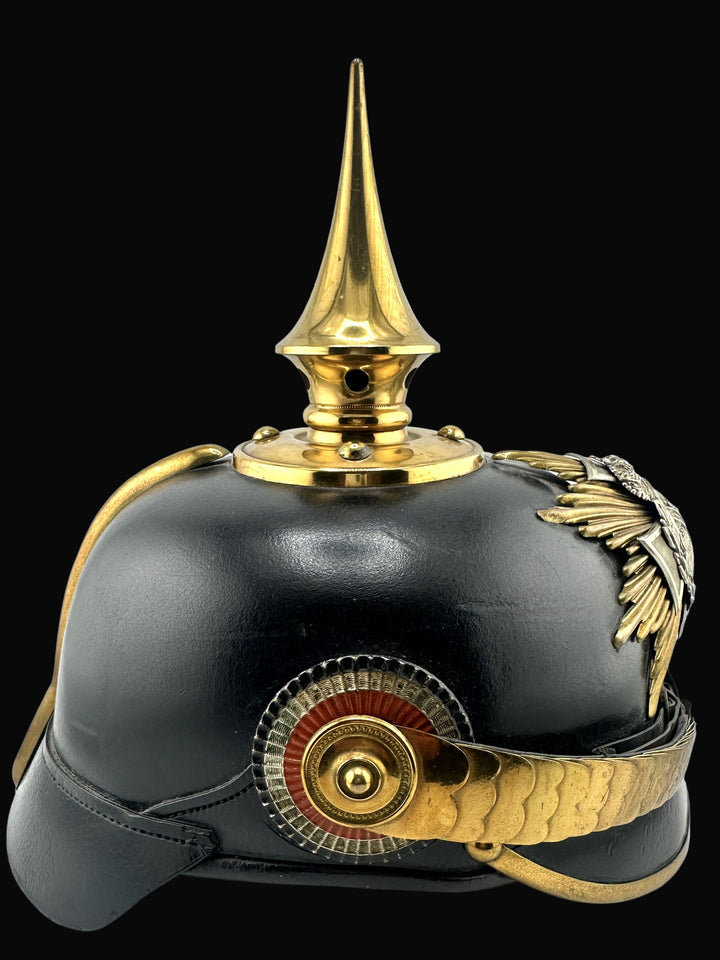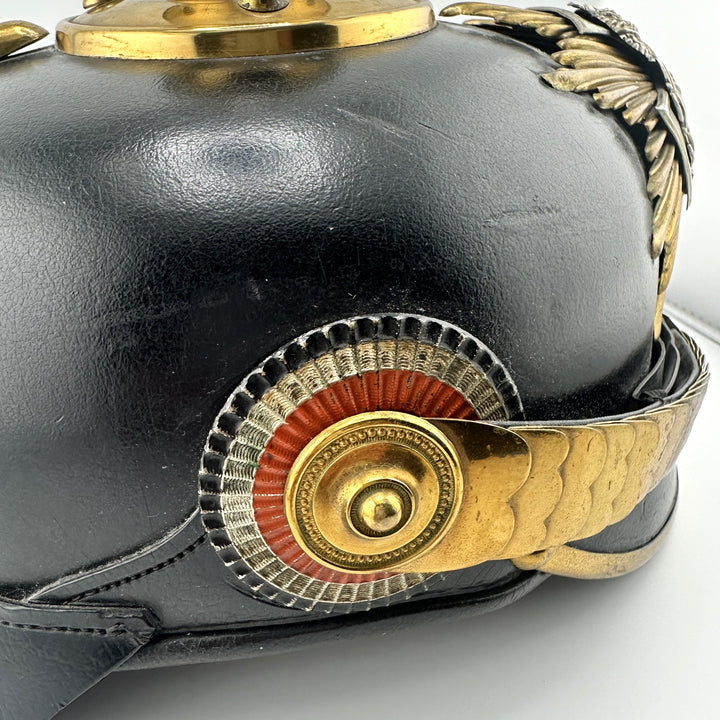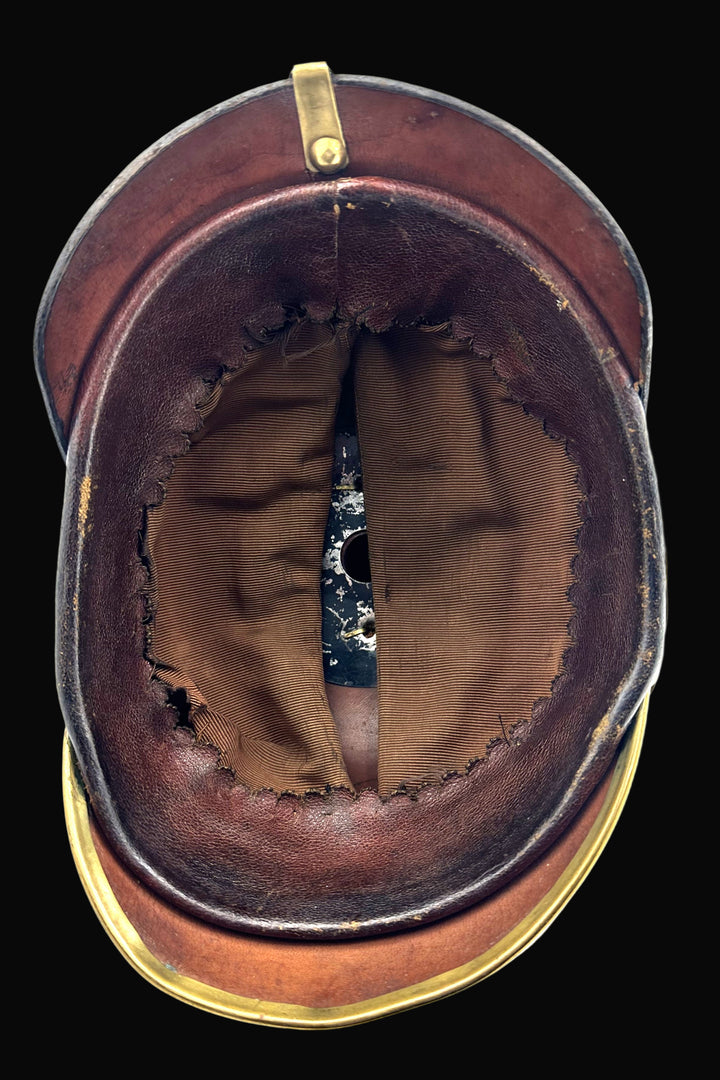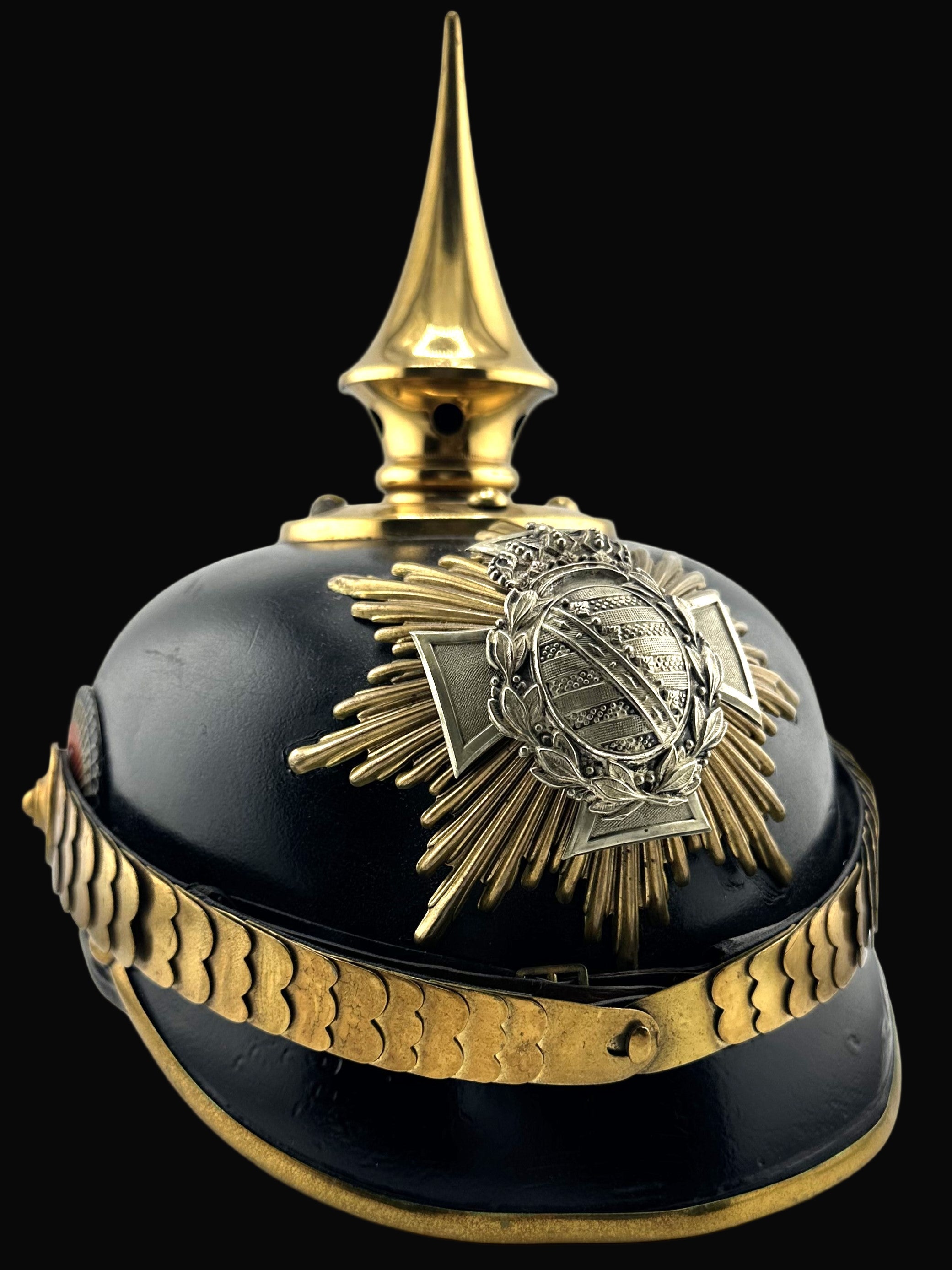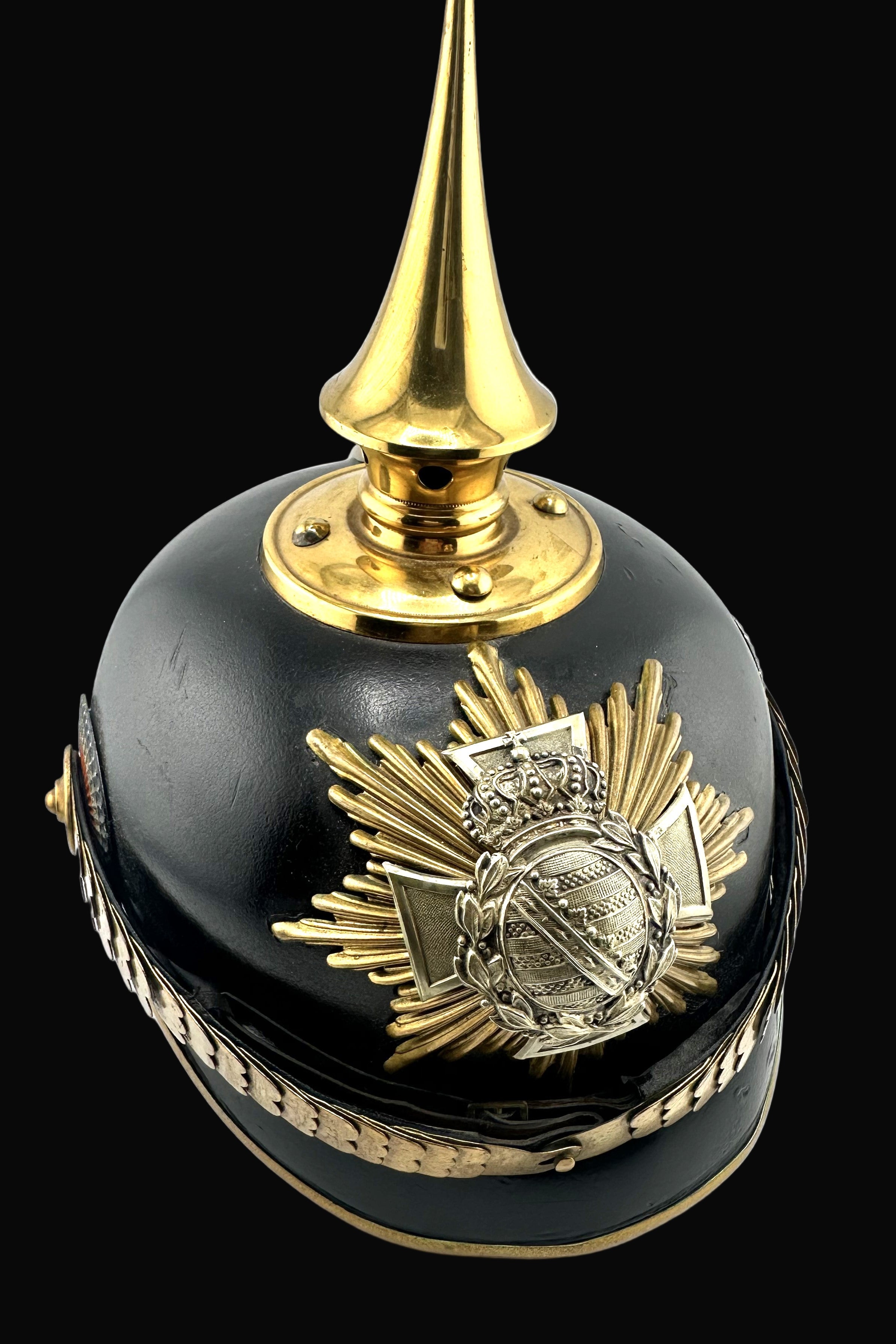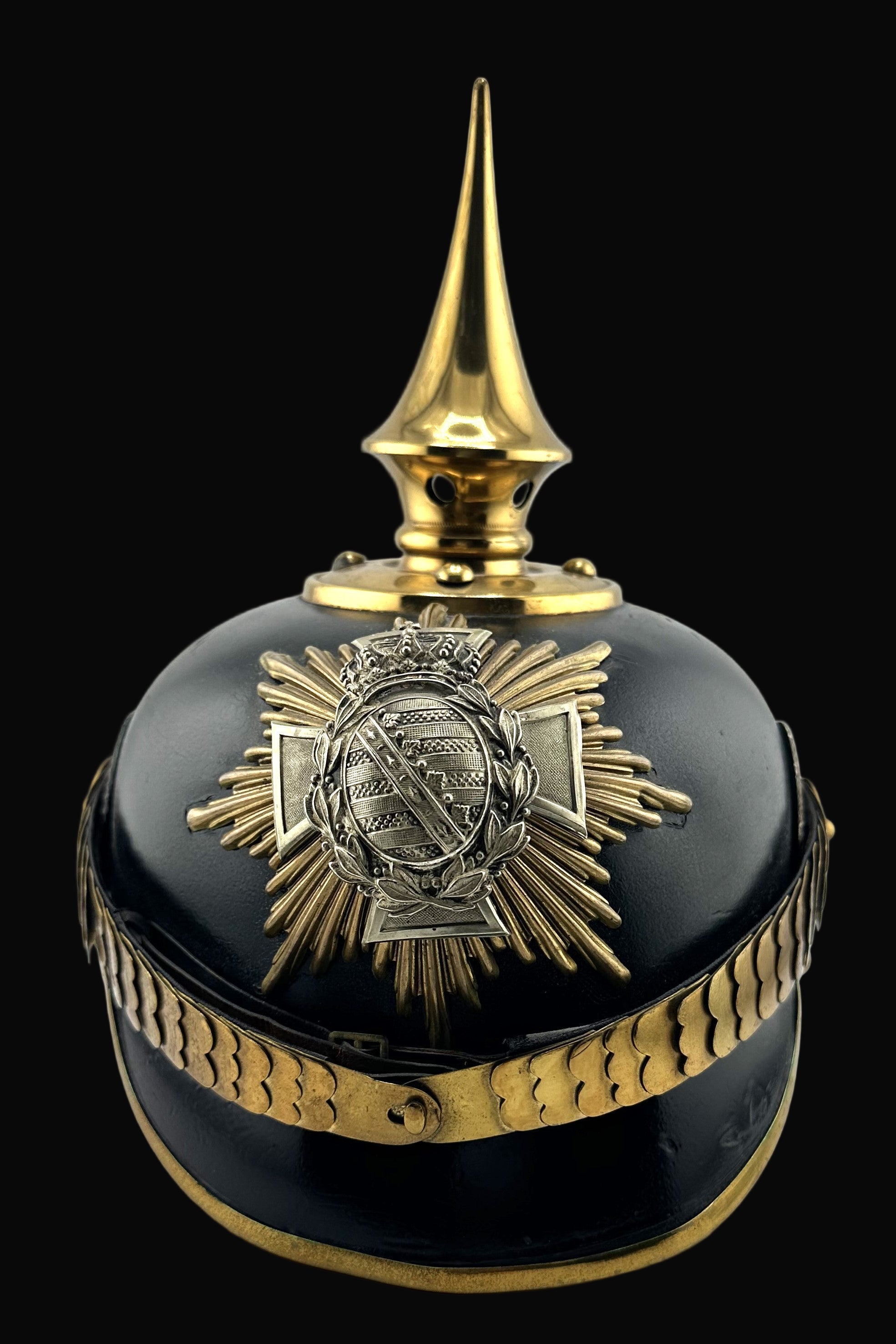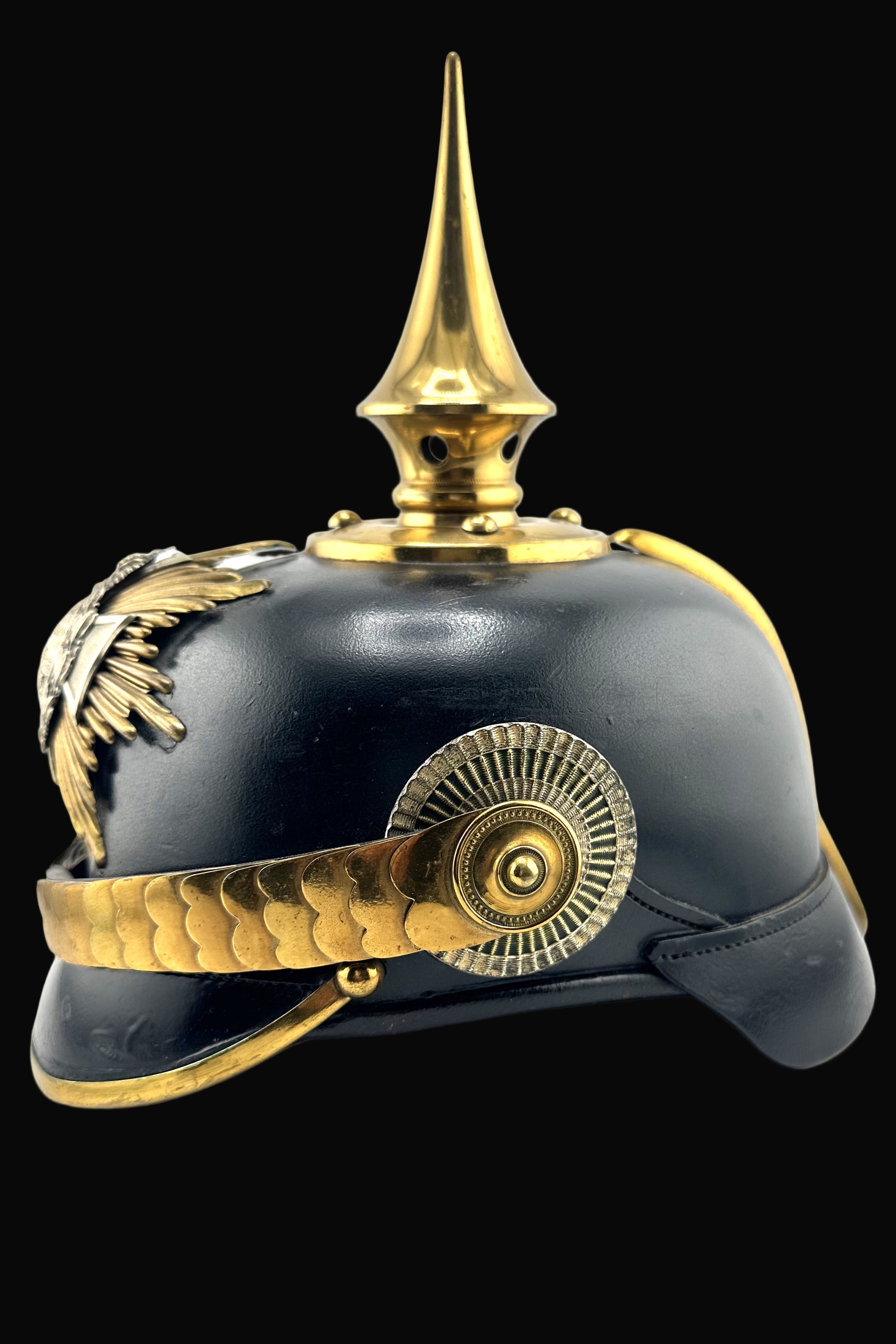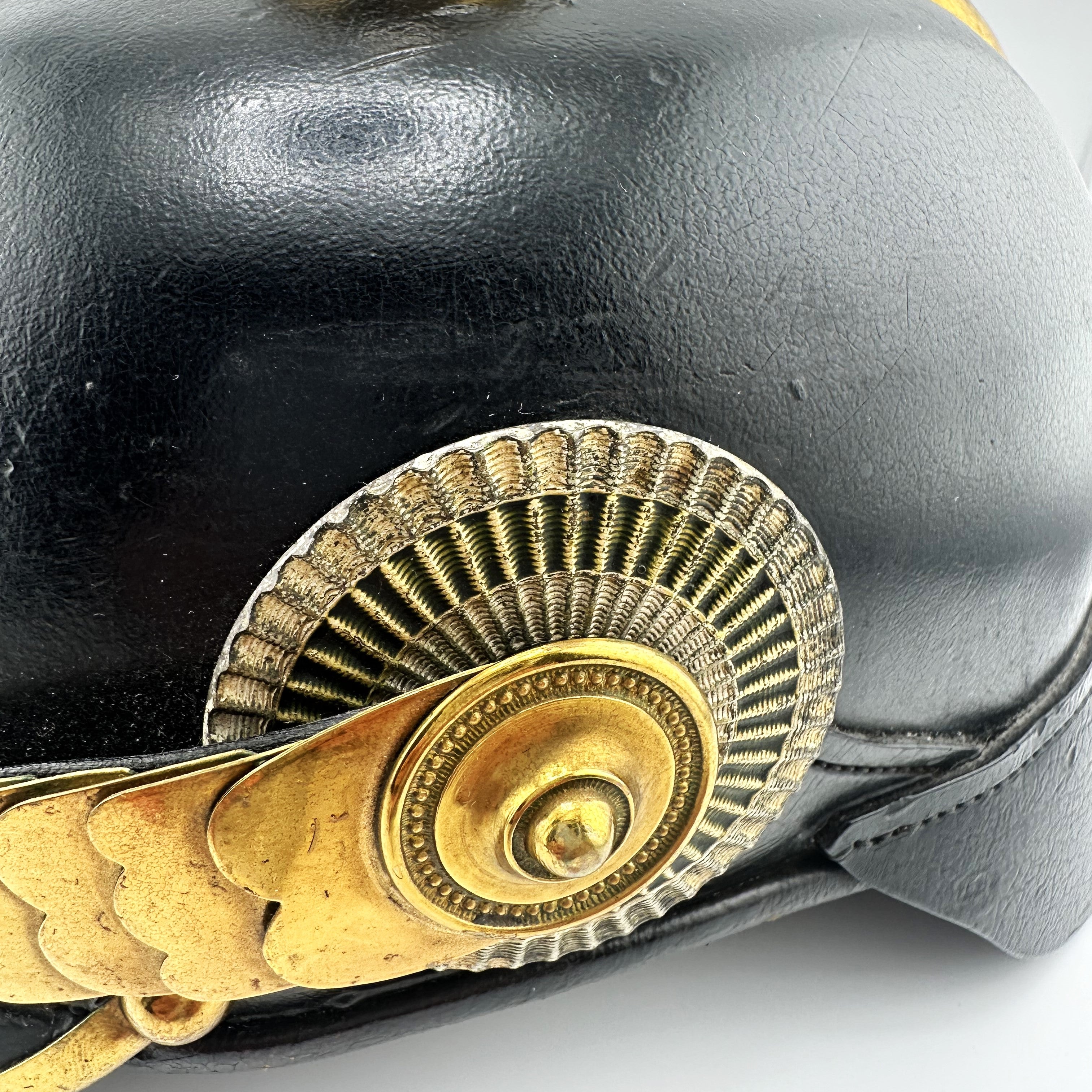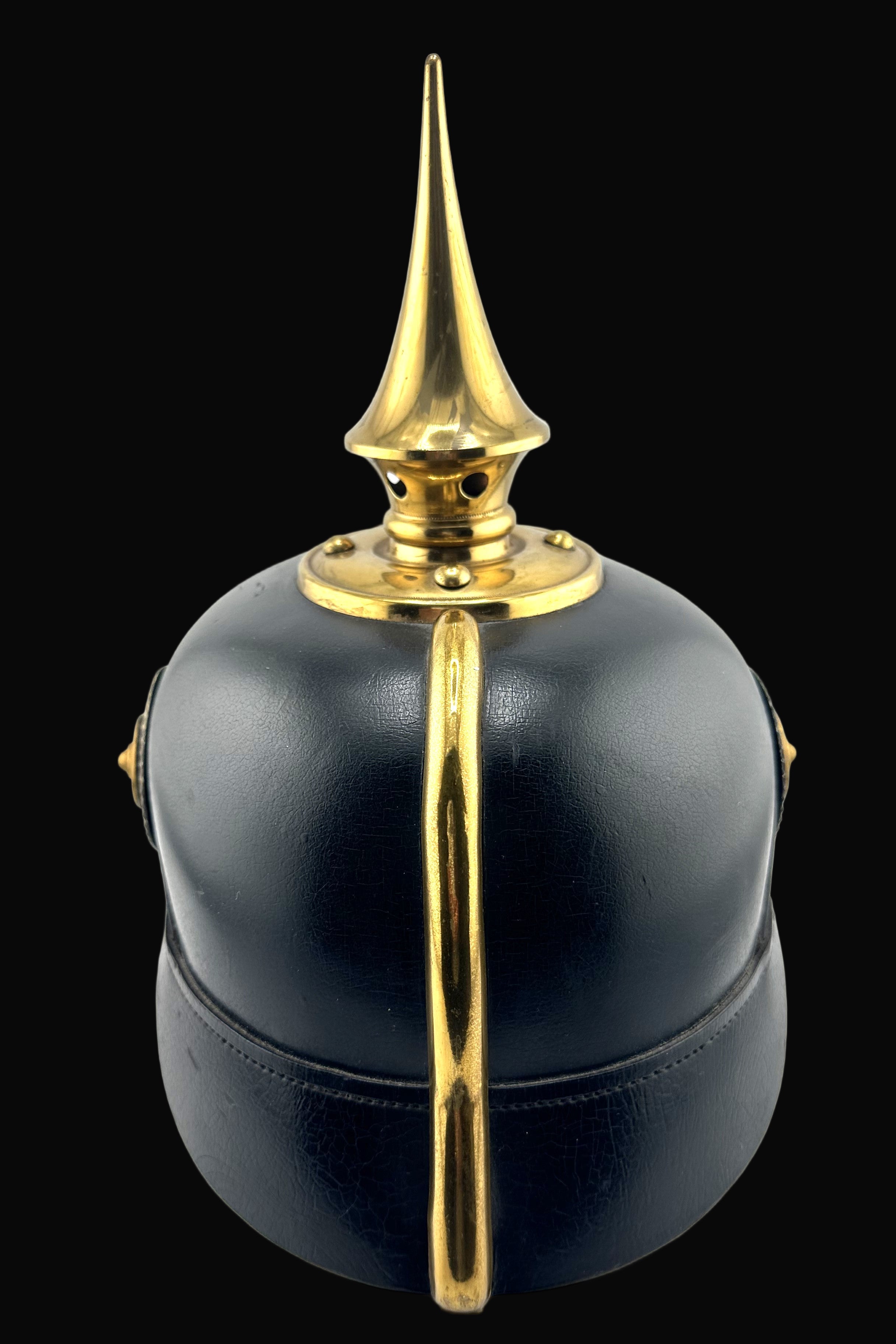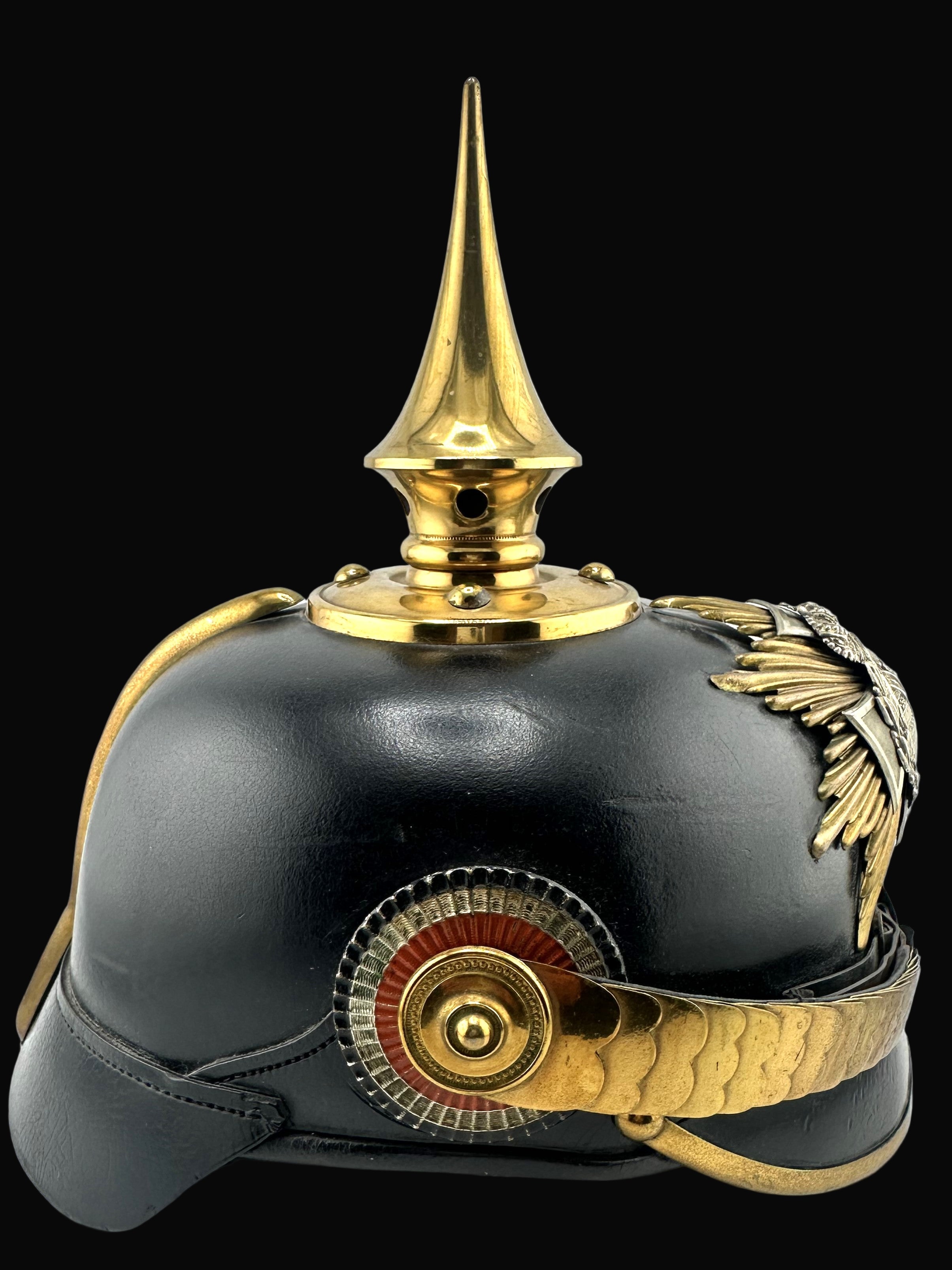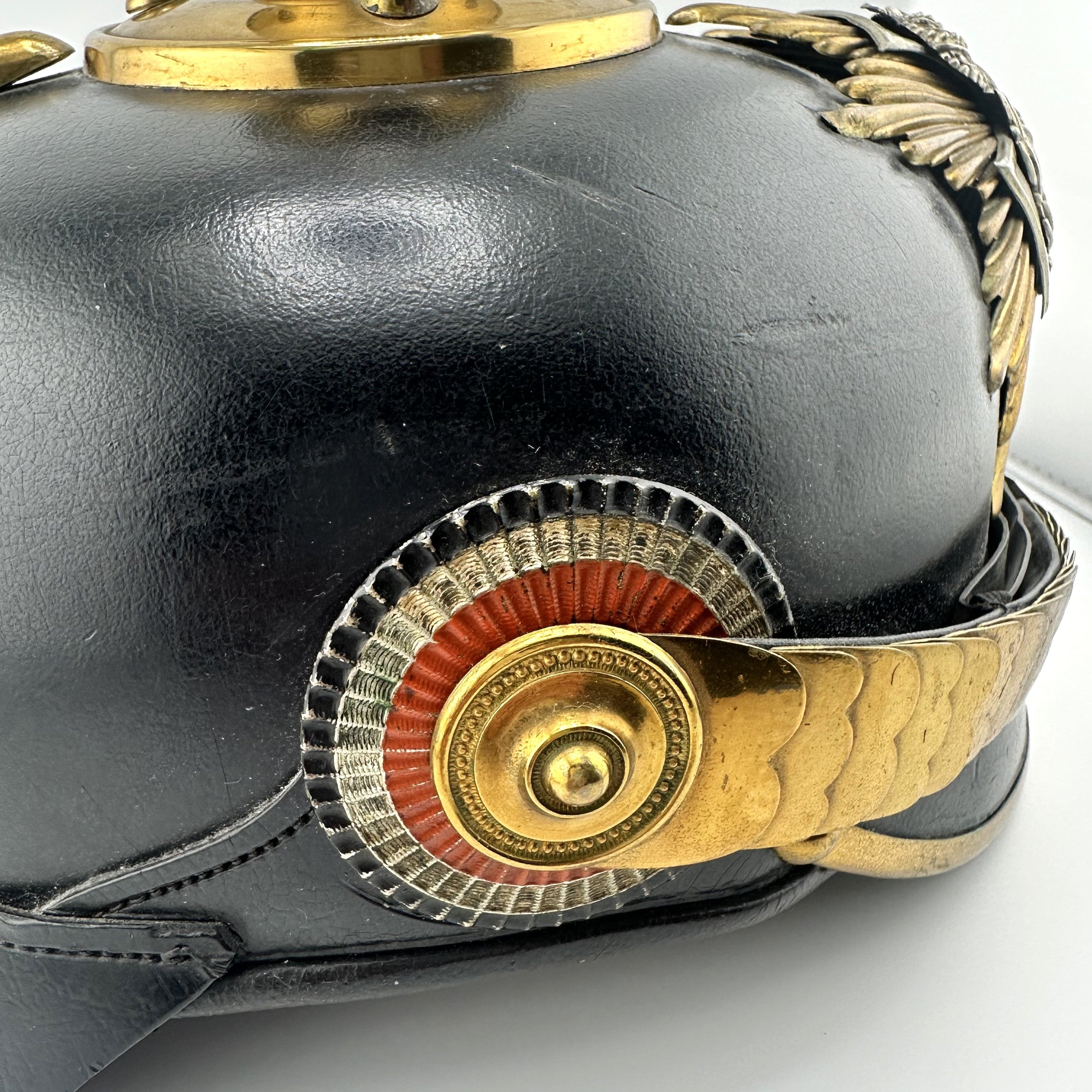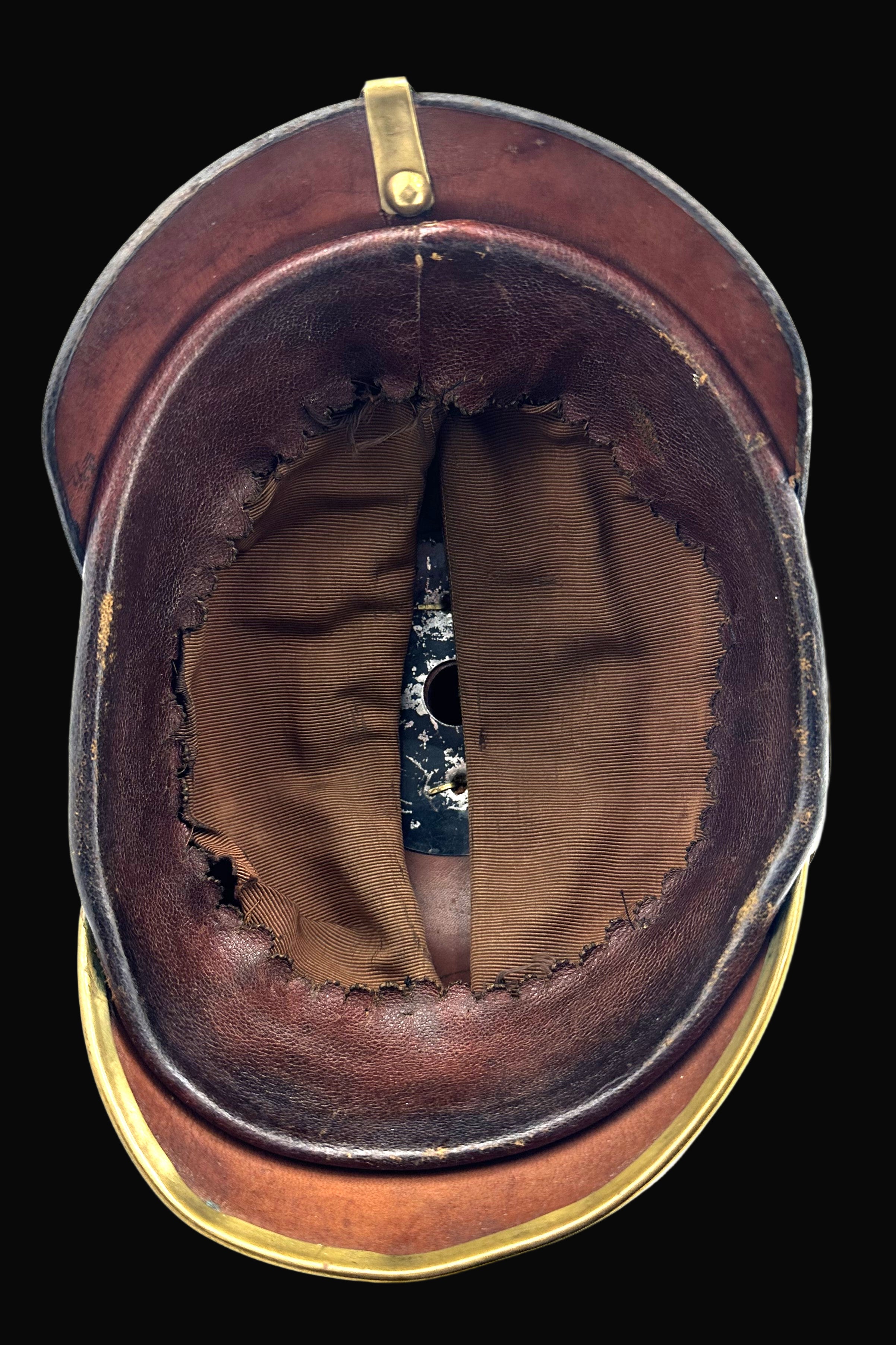Saxon Reserve Senior NCO Pickelhaube, Infantry Regiment, ca. 1914
- Regular price
- $3,495.00
- Sale price
- $3,495.00
- Regular price
- $3,800.00
SKU: 04-680
This regulation Reserve Senior Non-Commissioned Officer’s Pickelhaube originates from the Royal Saxon Army (Königlich Sächsische Armee), the third-largest state contingent within the Imperial German Army. Its form, materials, and insignia correspond to the model adopted during the final prewar decade, circa 1907–1914, and conform to the specifications of the Infanterie-Regimenter der Reserve (Reserve Infantry Regiments) of the Kingdom of Saxony.
Physical Description
The helmet body is constructed of black lacquered boiled leather with a semi-gloss finish, exhibiting full retention of form and integrity. All metal fittings are of gilt brass, including the tall removable spike, cruciform base with circular ventilation apertures, visor trim, and chinscales of the flat, scalloped officer type mounted to rosettes. The frontplate (Wappen) consists of a silvered eight-point starburst surmounted by the Saxon coat of arms—a vertically oriented oval shield with diagonal green-and-silver bands framed by a gilt laurel wreath and ducal crown. The central device bears, affixed across its center, a silver Reserve Cross with the inscription “MIT GOTT FÜR KOENIG UND VATERLAND” (“With God for King and Fatherland”), denoting service in the Reserve rather than the active line.
The helmet retains both State and Reich kokarden in correct officer form: the Saxon cockade on the right with alternating green and silver concentric rings, and the national cockade on the left bearing black–white–red bands. Interior features include a brown leather sweatband and a russet silk ribbed liner, both intact, with age-consistent wear. There are no extra holes beneath the plate, confirming originality of assembly. A single small upper spike-retaining screw is absent but the spike remains firmly seated.
Historical Context: The Saxon Army within the Imperial German System
Following the unification of Germany in 1871, the Royal Saxon Army retained its identity under the Military Convention of 1867, which integrated Saxon units into the Imperial Army while preserving their numbering, uniforms, and command structure. The Saxon army formed the XII and XIX Army Corps, headquartered at Dresden and Leipzig, under the command of the Saxon War Ministry. Its regiments ranked immediately after those of Prussia in order of precedence, ahead of Württemberg and Baden.
Infantry regiments of the Kingdom of Saxony followed Prussian organization but bore unique heraldic devices reflecting state sovereignty. The Saxon Wappen—the crowned shield of diagonal bars, supported by oak leaves—served as the central symbol of loyalty to the House of Wettin, the ruling dynasty of Saxony.
Reserve formations such as the Reserve-Infanterie-Regimenter were composed of men who had completed active service and remained liable for mobilization during wartime. Senior NCOs (Feldwebel and Vizefeldwebel ranks) represented the experienced professional core of these units, typically wearing helmets identical in construction to officer examples but with the closed-crown starburst plate rather than the openwork officer version.
The Pickelhaube and Its Evolution
The Pickelhaube (spiked helmet) was introduced into Prussian service in 1842 by King Friedrich Wilhelm IV and was subsequently adopted by nearly all German states. Saxony officially adopted the style in the 1850s, gradually modifying details to reflect state identity. By the time of Kaiser Wilhelm II’s reign, the Pickelhaube had become the outward emblem of the unified Imperial Army—its fittings varying in metal, spike form, and plate design to signify each contingent’s origin and rank structure.
By 1914, Saxon enlisted and NCO helmets were largely indistinguishable from their Prussian counterparts except for the distinctive starburst plate and state colors. The Reserve Cross, introduced by decree for reservists and Landwehr personnel, linked religious and monarchical duty—emphasizing the twin oaths “to God and King.”
Condition and Collector Analysis
This helmet remains in very fine to excellent condition. The lacquered body retains full curvature and depth of gloss with minor surface checking limited to the rear panel. The gilt fittings preserve a rich golden tone with minimal patina. The silver starburst and cross show crisp relief, and the laurel wreath displays fine chasing. The liner is undisturbed, exhibiting honest age but no structural compromise.
From a collector’s perspective, Reserve Senior NCO helmets from the Saxon contingent occupy an important but underrepresented category. They demonstrate officer-level quality but represent the backbone of Germany’s prewar army—professional soldiers who transitioned into the Reserve system prior to August 1914 mobilization. This example’s completeness, quality, and untouched state position it among the finer surviving Saxon NCO specimens
